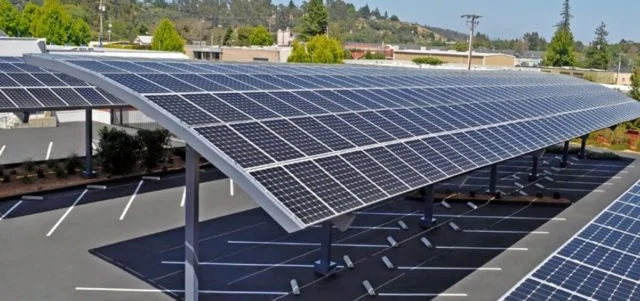Sea walls are set to be more crucial than ever as sea levels rise in decades to come, but do their risks outweigh their benefits?
Sea wall guide: what are the advantages and disadvantages?
Climate change is a serious topic in the 21st century. With its adverse effects on the environment all around the globe, it is something that demands utmost seriousness. One significant consequence of climate change is the rise in sea levels.
A rise in sea level causes an increase in waves and tides, and this necessitates the creation of sea walls to shield various shorelines. In this guide, we will explore the sea wall advantages and disadvantages, both to the sea and land.
Coastal regions are sources of attraction for various activities such as tourism, fishing, trade, and transport. For this reason, numerous coastal management strategies have been put in place to preserve these coastlines. Since sea walls are a part of the various measures taken to protect our coastline, understanding their operation, as well as their creation, is essential.
Seawalls have been in use for hundreds of years, with the earliest spanning back to as early as 195AD. These early seawalls in Constantinople (Istanbul) were used to protect their city from damaging effects of the sea.
This shows that the structures are beneficial, and that’s why they are still in use up to date. Before we explore sea wall pros and cons, let’s first define it.
What is a sea wall?
A sea wall is a manmade system that is constructed parallel to the coastline to protect the shoreline and the land that lies beyond it. The primary aim of many sea walls is to protect the shore from erosion, but they can also be used to defend human settlements and leisure areas from the negative effect of waves, tides, and tsunamis.
Human civilization has been using seawalls for millennia, with the earliest examples going back to 195AD, when these type of structures were built by Constantinople (modern-day Istanbul) to protect their city from the damaging effects of the sea.
Because sea walls are solid, stationary structures, they can interfere with coastal ecosystems and block sediment exchange between the land and the sea, along with other negative impacts.
Sea wall construction
Sea walls can come in a wide range of sizes and designs. Some sea walls are completely vertical, while others are curved, sloped, or stepped on the ocean side.
These structures may be constructed from various different materials, including:
- Monolithic concrete barriers
- Bricks
- Blocks
- Rubble mound structures
- Steel sheet pile
A sea wall’s construction and materials can have a significant impact on the its performance, with different designs and textures used to meet distinct purposes. For example, while a smooth surface will reflect wave energy, irregular surfaces can disperse wave direction.
Typically, seawalls also require deep, strong foundations for stability. They may feature earth anchors to help the wall withstand pressure from the land side: these are structures buried deep into the ground and connected to the wall with rods.
Financial needs for sea wall construction
Since sea walls need to protect the shoreline from strong waves, erosion, and even tsunamis, they need to be built with robust materials with very sturdy construction. This requires precision engineering: their design and construction demands specific expertise and can be very costly.
According to one survey conducted by the City of Ft. Lauderdale, sea walls can cost between $650 and $2000 per linear foot, depending on the location and the depth of the waterway. This doesn’t include expenses such as permitting and engineering services which cost from $2000 to $5000 per job.
Costs can also vary depending on the type of sea wall and the materials used.
Factors that influence the cost of building a seawall include:
- Design height: The total cost of the project is directly linked to the height of the sea wall. Higher walls use more materials and take longer to build, making them more expensive per foot.
- Anticipated wave loading: A sea wall needs to be built to withstand forces. If the wall is expected to encounter stronger waves, such as on exposed coastline or in deep waters, it needs to be robust enough to stand up to this pressure. In turn, building a stronger, more robust sea wall costs more money.
- The number of construction stages: Simple sea walls can be built in a single stage, whereas more complex designs involve multiple construction stages, which makes them more expensive.
- The design: Sea wall designs can range from quite basic to more complicated, features-rich designs, and the cost to build them varies accordingly.
- Construction materials: These structures can be built from a diverse range of materials, each of which comes with a different price tag. For example, wood, aluminum, or vinyl are typically much cheaper than concrete or steel walls.
- Location: The location of the wall can also influence its cost of construction, as this influences factors such as the cost of local labor and availability of raw materials.
Interesting facts about sea walls
Sea walls have long been used to protect coastal cities, beaches, and shorelines. Some key facts about sea walls you probably didn’t know:
- Sea walls can have a range of uses, from preventing waves from eroding the shoreline to protecting coastal areas from flooding.
- One of the longest sea walls in the world can be found in Guyana, which spans over 280 miles, covering most of this small country’s coastline. It was built by the Dutch in 1855 after a flood almost completely destroyed Camp House colony.
- Perhaps the most dramatic demonstration of the benefits of sea walls can be found in the city of Pondicherry, India. Built in 1735 by the French and subsequently maintained by Indian authorities, this sea wall is two kilometers in length and up to 27 feet above sea level in some sections. Thanks to the wall, the city was unflooded and suffered minimal casualties during the devastating 2004 Indian Ocean Tsunami, where 24-foot waves hit the coast.
- Sea walls can be built at both an individual and community level. There are many examples of adhoc sea wall construction to protect communities and individual properties.
- Sea walls may be part of a larger coastal region management plan, in conjunction with other technologies such as managed realignment and beach nourishment.
So are sea walls beneficial overall, or do they add more harm than good? Let’s weigh up sea wall advantages and disadvantages.

Sea wall advantages and disadvantages
Sea walls come with a range of both benefits and drawbacks for people, animals, and the natural environment. Let’s take a closer look at pros and cons analysis of using a sea wall along the coast, starting with their main advantages.
Advantages of sea walls
Sea walls can be extremely useful when coastlines are at risk of further erosion that may cause extreme damage, as well as to protect the shoreline and inland areas from flooding. They are a long-term solution that offer the following advantages.
They prevent coastal erosion
The most notable benefit of sea walls is that they provide excellent protection against coastal erosion and flooding.
The sea wall forms a permanent, stationary barrier between the sea and the land. Unlike other approaches like soft beach nourishment, they offer a long term solution to shoreline erosion.
They can be used to generate renewable energy
Sea walls also allow us to harness the power of the tides and turn it from a destructive force into a source of renewable energy. Tidal wave energy can be used to generate clean, reliable and renewable energy, and tidal energy facilities can be easily incorporated into sea walls.
They have a small footprint
Unlike other types of coastal defense such as dykes, sea walls require very little space to build. These structures are largely vertical with a compact footprint, and so take up minimal space on the sea and land sides.
Land in most coastal regions is a highly sought-after commodity, and buying the necessary land is one of the major expenses associated with constructing coastal defense systems. The minimal footprint of sea walls helps to keep construction costs low.
They are very flexible
Sea walls can generally be expanded or upgraded easily. In the context of a changing climate, as new threats develop, sea walls can be modified to meet these new needs and address new problems.
They add value to coastal areas
Sea walls make coastlines and the areas beyond more secure, which in turn maintains land values, as well as promoting local investment. Sea wall projects can also incorporate building promenades and leisure zones, helping to promote recreation and tourism.
They last a very long time
The sea walls are extremely strong and durable, and will last for centuries as long as they are maintained properly. A sea wall in Galveston, Texas, for example, was built in 1903 and continues to protect the city from coastal erosion and flooding.
Disadvantages of sea walls
Sea walls are typically used in areas where other approaches to preventing coastal erosion are inadequate, or have already failed. In many cases, they’re build as a last resort, as they come with a number of costs, financial and otherwise.
High cost of construction and maintenance
Because they need to withstand incredible pressures and forces, sea walls can be pretty expensive to build as well as maintain.
In particular, curved sea walls are designed to reflect the waves’ energy back into the ocean, and this can take its toll. Over time, the wall itself will start to erode, and so needs to be maintained, which can be costly.
Having said this, as sea walls are a permanent solution that last for centuries, they may turn out to be the most affordable solution over the long term.
They disturb marine and coastal habitats
Building any large, permanent structure will have an impact on the natural environment. Sea walls can disrupt marine and coastal ecosystems and interfere with habitat migration.
They act as a physical barrier that blocks birds, fish, and other animals, preventing them from accessing food and other vital resources. These walls also restrict tidal flows and affect water levels, eliminating coastal rock pools or other areas that normally fill with water at high tide, and therefore destroying these habitats.
They restrict sediment flow
Another environmental impact associated with building sea walls is that they restrict sediment flows and can lead to sediment starvation in extreme cases. In simple terms, the sea side of the wall experiences rapid erosion, but the sediment isn’t replaced through hinterland erosion because the flows are blocked by the wall.
Equally, sea walls hinder natural shoreline erosion, where sediment moves along the coast, supplying beaches further along. Sea walls get in the way of this, reducing or even destroying other beaches.
If they’re too low they can lead to overtopping
Overtopping is another issue that can arise, especially if the sea wall is too low. This is when sea water flows over the wall and to the other side.
In extreme cases, this can lead to significant soil and sand erosion, weakening the wall. As sea levels rise, existing walls may need to be built up or updated to avoid overtopping.
They disrupt the natural line of the coast
Although the sea wall will prevent erosion, as soon as the wall ends, the coastline will be subject to natural conditions again. At this point, the coast will often erode, sometimes in a dramatically-stepped line.
They can restrict accessibility
Sea walls may restrict access to beaches and recreational areas, especially for disabled people or the mobility-impaired. They may also get in the way of emergency services and so could cause safety risks.
Some sea walls can also be an eyesore, threatening tourism and adversely affecting local communities.
Barriers to sea wall implementation
There are a number of challenges that can threaten sea wall construction, with cost arguably being the biggest hurdle. These projects need to materials and construction that are strong enough to stand up to strong waves and high pressure, which can be expensive.
Additionally, not all local authorities are willing to invest in the preparation that is an essential part of building a sea wall, such as engineering consultation and in-depth research around environmental impacts.
This data is often unavailable, especially in developing countries, and collecting it can be expensive, making this a hindrance to some projects.
Equally, a lack of expertise can be a significant barrier in developing countries, as well as other locations. Sea wall construction demands specialist expertise, from planning and engineering to skilled labor, which may need to be imported at significant cost.
Finally, some areas may lack the specialized machinery, raw materials, and labor needed for sea wall construction. Having to import all of this, along with skilled labor and expertise, will further add to the cost.
Final thoughts on sea wall advantages and disadvantages
Sea walls have long been used to prevent erosion and protect coastal areas from flooding. With scientists predicting sea levels will rise because of climate change, these structures may become even more vital in the future.
However, while sea walls can be beneficial in a range of ways, they also have their drawbacks, including potentially disrupting local ecosystems and harming wildlife. Whether at a individual, community, or government level, it’s important to weigh up the sea wall advantages and disadvantages before embarking on any sea wall project.
If you’ve found this article interesting, you’re sure to like our posts on improving human-environment interaction , how to reduce your environment footprint and key environmental issues in Japan.













